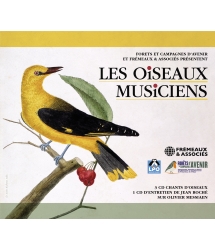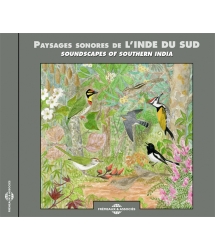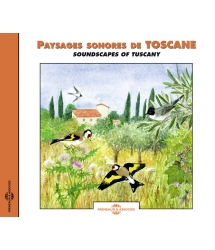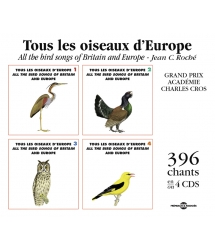- Our Catalog
- Philosophy
- Philosophers of the 20th century and today
- History of Philosophy (PUF)
- Counter-History and Brief Encyclopedia by Michel Onfray
- The philosophical work explained by Luc Ferry
- Ancient thought
- Thinkers of yesterday as seen by the philosophers of today
- Historical philosophical texts interpreted by great actors
- History
- Books (in French)
- Social science
- Historical words
- Audiobooks & Literature
- Our Catalog
- Jazz
- Blues
- Rock - Country - Cajun
- French song
- World music
- Africa
- France
- Québec / Canada
- Hawaï
- West Indies
- Caribbean
- Cuba & Afro-cubain
- Mexico
- South America
- Tango
- Brazil
- Tzigane / Gypsy
- Fado / Portugal
- Flamenco / Spain
- Yiddish / Israel
- China
- Tibet / Nepal
- Asia
- Indian Ocean / Madagascar
- Japan
- Indonesia
- Oceania
- India
- Bangladesh
- USSR / Communist songs
- World music / Miscellaneous
- Classical music
- Composers - Movie Soundtracks
- Sounds of nature
- Our Catalog
- Youth
- Philosophy
- News
- How to order ?
- Receive the catalog
- Manifesto
- Dictionnary











- Our Catalog
- Philosophy
- Philosophers of the 20th century and today
- History of Philosophy (PUF)
- Counter-History and Brief Encyclopedia by Michel Onfray
- The philosophical work explained by Luc Ferry
- Ancient thought
- Thinkers of yesterday as seen by the philosophers of today
- Historical philosophical texts interpreted by great actors
- History
- Books (in French)
- Social science
- Historical words
- Audiobooks & Literature
- Our Catalog
- Jazz
- Blues
- Rock - Country - Cajun
- French song
- World music
- Africa
- France
- Québec / Canada
- Hawaï
- West Indies
- Caribbean
- Cuba & Afro-cubain
- Mexico
- South America
- Tango
- Brazil
- Tzigane / Gypsy
- Fado / Portugal
- Flamenco / Spain
- Yiddish / Israel
- China
- Tibet / Nepal
- Asia
- Indian Ocean / Madagascar
- Japan
- Indonesia
- Oceania
- India
- Bangladesh
- USSR / Communist songs
- World music / Miscellaneous
- Classical music
- Composers - Movie Soundtracks
- Sounds of nature
- Our Catalog
- Youth
- Philosophy
- News
- How to order ?
- Receive the catalog
- Manifesto
- Dictionnary
THE CAMARGUE AND THE CRAU
Ref.: FA712
Author : FREMEAUX & ASSOCIES
Artistic Direction : JEAN ROCHE
Label : Frémeaux & Associés
Total duration of the pack : 1 hours
Nbre. CD : 1
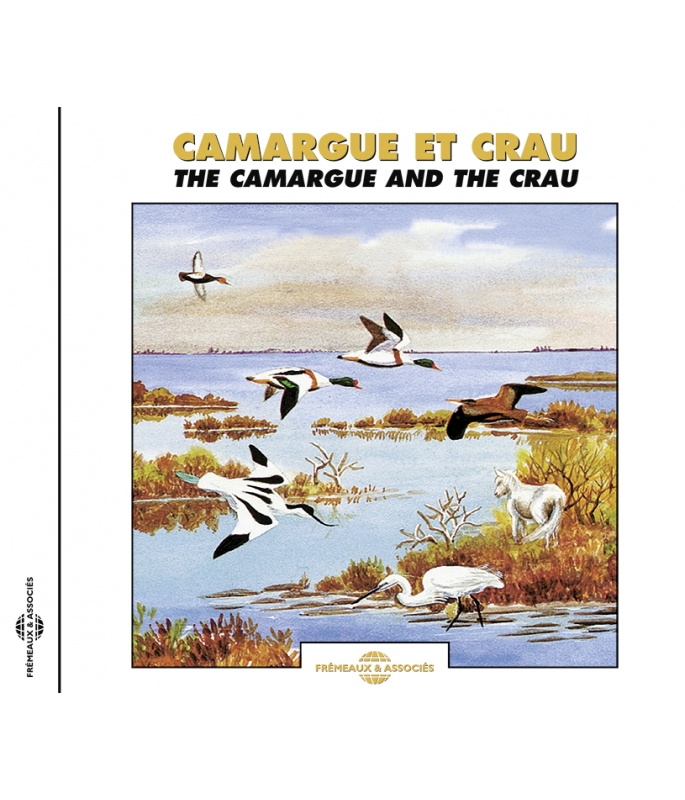
THE CAMARGUE AND THE CRAU
THE CAMARGUE AND THE CRAU
This CD allows the listener to experience three natural atmospheres of the Camargue and one of the Crau, recorded in true stereo, in May, during days without the famous mistral wind. During more than one hour, these unique soundscapes are presented in four natural concerts: Dawn – then dusk – at La Capelière; dawn in the expanse of a stone dessert, The Crau; and dawn on the Digue à la Mer, with vast flats covered on Glasswort. Patrick FRÉMEAUX

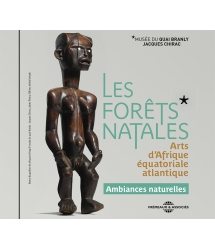
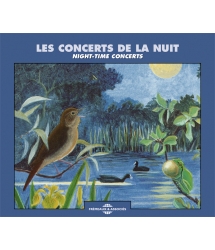
-
PisteTitleMain artistAutorDurationRegistered in
-
1Concert de Camargue à « La Capelière »Camargue concert at La CapelièreSons de la nature00:00:461998
-
2Rousserolle effarvatte (chant d’un mâle)Reed Warbler (a male’s song)Sons de la nature00:01:281998
-
3Héron pourpré (cris de vol)Purple Heron (flight call)Sons de la nature00:00:201998
-
4Coucou gris (chant d’un mâle)Cuckoo (a male’s song)Sons de la nature00:01:071998
-
5Rousserolle turdoïde (chant d’un mâle)Great Reed Warbler (a male’s song)Sons de la nature00:00:171998
-
6Poule d’eau (cris bref)Moorhen (brief call)Sons de la nature00:00:251998
-
7Butor étoilé (chant d’un mâle très grave et sourd)Bittern (the low-pitched song of a male)Sons de la nature00:02:021998
-
8Grèbe castagneux (bruyantes parades d’un couple)Little Grebe (a pair’s noisy display)Sons de la nature00:00:241998
-
9Flamant rose (cris de vol)Greater Flamingo (flight calls)Sons de la nature00:02:571998
-
10Foulque macroule (cris habituels)Coot (usual calls)Sons de la nature00:01:151998
-
11Bouscarle de Cetti (chant d’un mâle)Cetti’s Warbler (a male’s song)Sons de la nature00:04:121998
-
12Rossignol philomèle (chants de 2 mâles proches)Nightingale (the songs of two close males)Sons de la nature00:03:591998
-
13Grenouille verte « de Graff » (chants des mâles)Graf’s Frog, a type of Green Frog (males singing)Sons de la nature00:00:541998
-
14Coucou (cris d’une femelle)Cuckoo (calls of a female)Sons de la nature00:00:401998
-
15Ragondin (gémissement bref)Coypu (short groan)Sons de la nature00:01:181998
-
16Concert de Rainettes vertes méridionalesConcert of Stripeless Tree Frogs (at nightfall)Sons de la nature00:03:421998
-
17Concert de la CrauConcert in tha CrauSons de la nature00:00:131998
-
18Alouette calandrelle (chant d’un mâle en vol)Short-toed Lark (song of a male in flight)Sons de la nature00:03:011998
-
19OEdicnème criard (cris de parade d’un couple)Stone Curlew (display calls of a pair)Sons de la nature00:00:221998
-
20Alouette des champs (chant d’un mâle en vol)Skylark (song of a male in flight)Sons de la nature00:03:181998
-
21Outarde canepetière (craquement aigu très bref, c’est son chant)Little Bustard (a very short, high-pitched creak, the male’s song)Sons de la nature00:00:491998
-
22Ganga cata (cris d’une petite troupe en vol)Pin-tailed Sandgrouse (calls of a small flock in flight)Sons de la nature00:01:151998
-
23Pipit rousseline (chant d’un mâle)Tawny Pipit (a male’s song)Sons de la nature00:01:031998
-
24OEdicnème criard (cris d’alarme d’une femelle)Stone Curlew (alarm call of a female)Sons de la nature00:01:381998
-
25Traquet oreillard (chant d’un mâle)Black-eared Wheatear (a male’s song)Sons de la nature00:01:121998
-
26Traquet oreillard (cris d’alarme d’un mâle)Black-eared Wheatear (alarm call of a male)Sons de la nature00:00:471998
-
27Alouette calandre (chant d’un mâle en vol)Calandra Lark (song of a male in flight)Sons de la nature00:01:381998
-
28Concert de la Digue à la MerConcert at the Digue à la MerSons de la nature00:00:061998
-
29Avocette (cris en vol)Avocet (flight calls)Sons de la nature00:00:451998
-
30Goéland leucophée (cris de parade)Yellow-legged Gull (display calls)Sons de la nature00:00:221998
-
31Flamant rose (cris d’un petit groupe en vol)Greater Flamingo (calls of a small group in flight)Sons de la nature00:00:281998
-
32Chevalier gambette (chant en vol)Redshank (call in flight)Sons de la nature00:02:501998
-
33Sterne pierregarin (cris de parades d’un petit groupe en vol)Common Tern (display calls of a small group in flight)Sons de la nature00:00:471998
-
34Bergeronnette printanière (double-note aiguë, c’est son chant)Blue-headed Wagtail (high-pitched double note, his song)Sons de la nature00:00:561998
-
35Chevalier gambette (cris d’inquiètude)Redshank (distress calls)Sons de la nature00:02:581998
-
36Canard colvert (cris d’une femelle en vol)Mallard (calls of a female in flight)Sons de la nature00:02:141998
-
37Goéland leucophée (cris d’alarme en vol d’un adulte isolé)Yellow-legged Gull (alarm calls of a single adult in flight)Sons de la nature00:03:081998
-
38Mouettes rieuses (cris d’un petit groupe en vol)Black-headed Gull (calls of a small flock in flight)Sons de la nature00:00:221998
-
39Echasse blanche (cris d’un petit groupe en parade)Black-winged Stilt (calls of a small group displaying)Sons de la nature00:02:121998
-
40Tadorne de Belon (cris d’un mâle)Shelduck (a male’s calls)Sons de la nature00:00:461998
-
41Goéland leucophée (cris d’alarme, colonie dérangée par un rapace)Yellow-legged Gull (alarm calls, a colony disturbed by a bird of prey)Sons de la nature00:01:371998
CLICK TO DOWNLOAD THE BOOKLET
FA712 Camargue et Crau
Camargue et Crau
... Camargue et Crau ...
Le premier concert a été enregistré à « La Capelière », sur la route qui longe la rive Est de l’Etang du Vaccarès, au sud de Villeneuve. Il dure plus de 22 minutes.
A 5 heures du matin, au mois de mai, le concert est d’une densité et d’une variété étonnantes, avec, d’un coté, les chants et les cris de l’immense roselière, et, de l’autre coté, ceux du petit bois entourant la maison de La Capelière, avec ses roubines (canaux creusés par l’homme) et son étang bordés de tamaris et de buissons.
Cris rauques des Hérons pourprés, mugissements sourds d’un Butor étoilé, cris brefs des Foulques macroules et des Gallinules poules-d’eau, rires des Grèbes castagneux en parade, cris de vol de quelques Flamants roses, trilles mélodieuses des Rossignols philomèles, exclamations vigoureuses des Bouscarles de Cetti, chant du Coucou gris et des Rousserolles effarvattes et turdoïdes, et rires des Grenouilles vertes composent l’essentiel de ce concert.
Le second concert de Rainettes vertes méridionales a été enregistré au même endroit que le premier, à la tombée de la nuit; les rainettes se mettent à chanter, d’abord quelques unes, puis des centaines à la fois, forment un choeur immense d’une puissance sonore étonnante. Il dure un peu moins de 4 minutes.
Le troisième concert vous emmène dans le désert de galets ronds de la Crau, entre Arles et Martigues, désert qui s’étend jusqu’à Salon et au pied des Alpilles. Il dure plus de 15 minutes. Ici la faune est totalement différente : pas d’oiseaux marins ou aquatiques, mais des espèces adaptées aux régions désertiques : Alouettes calandrelles et des champs, Outarde canepetière (la Crau est l’un de ses derniers refuges en France), Oedicnèmes criards, Gangas catas (une espèce de pigeon terrestre désertique qui se retrouve en Espagne et au Maghreb), Pipits rousselines, et Traquets oreillards.
Le quatrième concert vous emmène sur la Digue à la Mer, précisément sur sa partie Est, restée ouverte au public. Il dure plus de 17 minutes. L’ambiance sonore forte est dominée par les Goélands leucophées et les Flamants roses. On note des passages de Canards colverts, de Sternes pierregarins, de Mouettes rieuses, un chant de Bergeronnette printanière, une Rousserolle turdoïde nichant dans une petite langue de roseaux, des Echasses blanches en parade, un Chevalier gambette, un Tadorne de Belon et à la fin les cris d’alarme collectifs de Goélands leucophées alertés par le passage d’un rapace.
Liste des index qui vous permettront de repérer certaines espèces dans ces 4 concerts
1 - Concert de Camargue à « La Capelière » 22’18’’
2 - Rousserolle effarvatte (chant d’un mâle)
3 - Héron pourpré (cris de vol)
4 - Coucou gris (chant d’un mâle)
5 - Rousserolle turdoïde (chant d’un mâle)
6 - Poule d’eau (cris bref)
7 - Butor étoilé (chant d’un mâle très grave et sourd)
8 - Grèbe castagneux (bruyantes parades d’un couple)
9 - Flamant rose (cris de vol)
10 - Foulque macroule (cris habituels)
11 - Bouscarle de Cetti (chant d’un mâle)
12 - Rossignol philomèle (chants de 2 mâles proches)
13 - Grenouille verte « de Graff » (chants des mâles)
14 - Coucou (cris d’une femelle)
15 - Ragondin (gémissement bref)
16 - Concert de Rainettes vertes méridionales 3’41’’
17 - Concert de la Crau 5’24”
18 - Alouette calandrelle (chant d’un mâle en vol)
19 - Œdicnème criard (cris de parade d’un couple)
20 - Alouette des champs (chant d’un mâle en vol)
21 - Outarde canepetière (craquement aigu très bref, c’est son chant)
22 - Ganga cata (cris d’une petite troupe en vol)
23 - Pipit rousseline (chant d’un mâle)
24 - Œdicnème criard (cris d’alarme d’une femelle)
25 - Traquet oreillard (chant d’un mâle)
26 - Traquet oreillard (cris d’alarme d’un mâle)
27 - Alouette calandre (chant d’un mâle en vol)
28 - Concert de la Digue à la Mer 19’37”
29 - Avocette (cris en vol)
30 - Goéland leucophée (cris de parade)
31 - Flamant rose (cris d’un petit groupe en vol)
32 - Chevalier gambette (chant en vol)
33 - Sterne pierregarin (cris de parades d’un petit groupe en vol)
34 - Bergeronnette printanière (double-note aiguë, c’est son chant)
35 - Chevalier gambette (cris d’inquiètude)
36 - Canard colvert (cris d’une femelle en vol)
37 - Goéland leucophée (cris d’alarme en vol d’un adulte isolé)
38 - Mouettes rieuses (cris d’un petit groupe en vol)
39 - Echasse blanche (cris d’un petit groupe en parade)
40 - Tadorne de Belon (cris d’un mâle)
41 - Goéland leucophée (cris d’alarme, colonie dérangée par un rapace)
Chacun de ces 41 index signale la première apparition sonore d’une espèce, bien distinctement en premier plan. Mais la plupart des espèces chantent ou crient pendant toute la durée des concerts.
Mens, le 20 juillet 1998,
Jean C. Roché.
Enregistrements, textes et direction
de production : Jean C. Roché
Assistante de production : Christelle Pellegrin
Illustration de couverture : Serge Nicolle
Illustrations intérieures : Jean Chevallier
Traduction : Tony Williams
... The Camargue and the Crau ...
The first concert of this CD was recorded at La Capelière, on the road that flanks the eastern edge of the famous Vaccarès lake, to the south of the village of Villeneuve. It lasts for more than 22 minutes.
At five o’clock in the morning, in May, the concert is of remarkable density and variety, with, on one side, the songs and calls from an extensive reedbed, and, on the other, those from a small wood around the buildings at La Capelière, with its ditches and pond surrounded by tamarisks and other bushes.
The raucous calls of Purple Herons, low bellowing of a Bittern, short calls of Coot and Moorhen, the laughing of displaying Dabchicks, flight calls of Greater Flamingos, melodious trills of Nightingales, explosive exclamations of Cetti’s Warblers, the song of Cuckoo and Reed and Great Reed Warblers, and the laughing of Green Frogs make up the main part of this concert.
The second concert of Stripeless Tree Frogs was recorded at the same place as the first, at nightfall; the Tree Frogs start to sing, a few at first, then all together, thousands forming an enormous, loud choir of surprising force. It lasts a little less than four minutes.
The third concert takes the listener to the stone desert wastes of the Crau, between the towns of Arles and Martigues, a desert which stretches as far as Salon and to the foot of the Alpilles. It lasts more than fifteen minutes. Here there is a totally different array of species: there are no marine or aquatic birds, but species adapted to desert conditions : Skylarks and Short-toed Larks, Little Bustards (the Crau is one of their last strongholds in France), Stone Curlews, Pin-tailed Sandgrouse (a sort of desert living terrestrial pigeon otherwise found in Spain and northern Africa), Tawny Pipits and Black-eared Wheatears.
The fourth concert takes the listener to the Digue à la Mer, to its eastern end, that part open to the public. The concert lasts a little over 17 minutes. The sound atmosphere is strong, dominated by Yellow-legged Gulls and Greater Flamingos. It’s also possible to hear snatches of Mallard, Common Terns, Black-headed Gulls, the song of a Blue-headed Wagtail, that of a Great Reed Warbler nesting in a small spit of reeds, displaying Black-winged Stilts, a Redshank, a Shelduck and at the end the collective alarm calls of a group of Yellow-legged Gulls disturbed by a passing bird of prey.
A list of the indices of many of the species included in the four concerts is given below,
allowing the listener to find them easily
1 - Camargue concert at La Capelière 22’18’’
2 - Reed Warbler (a male’s song)
3 - Purple Heron (flight call)
4 - Cuckoo (a male’s song)
5 - Great Reed Warbler (a male’s song)
6 - Moorhen (brief call)
7 - Bittern (the low-pitched song of a male)
8 - Little Grebe (a pair’s noisy display)
9 - Greater Flamingo (flight calls)
10 - Coot (usual calls)
11 - Cetti’s Warbler (a male’s song)
12 - Nightingale (the songs of two close males)
13 - Graf’s Frog, a type of Green Frog (males singing)
14 - Cuckoo (calls of a female)
15 - Coypu (short groan)
16 - Concert of Stripeless Tree Frogs (at nightfall) 3’41”
17 - Concert in tha Crau 15’24”
18 - Short-toed Lark (song of a male in flight)
19 - Stone Curlew (display calls of a pair)
20 - Skylark (song of a male in flight)
21 - Little Bustard (a very short, high-pitched creak, the male’s song)
22 - Pin-tailed Sandgrouse (calls of a small flock in flight)
23 - Tawny Pipit (a male’s song)
24 - Stone Curlew (alarm call of a female)
25 - Black-eared Wheatear (a male’s song)
26 - Black-eared Wheatear (alarm call of a male)
27 - Calandra Lark (song of a male in flight)
28 - Concert at the Digue à la Mer 19’37”
29 - Avocet (flight calls)
30 - Yellow-legged Gull (display calls)
31 - Greater Flamingo (calls of a small group in flight)
32 - Redshank (call in flight)
33 - Common Tern (display calls of a small group in flight)
34 - Blue-headed Wagtail (high-pitched double note, his song)
35 - Redshank (distress calls)
36 - Mallard (calls of a female in flight)
37 - Yellow-legged Gull (alarm calls of a single adult in flight)
38 - Black-headed Gull (calls of a small flock in flight)
39 - Black-winged Stilt (calls of a small group displaying)
40 - Shelduck (a male’s calls)
41 - Yellow-legged Gull (alarm calls, a colony disturbed by a bird of prey)
Each of the 41 indices indicates the first sound appearance of that particular species or its distinct occurence in the foreground. In reality, most of the species of these 41 indices sing or call to some extent throughout the concert in which they are cited.
Mens, 20th July 1998,
Jean C. Roché
Recordings, commentaries and
production director: Jean C. Roché
Production assistant: Christelle Pellegrin
Cover picture: Serge Nicolle
Inside pictures: Jean Chevallier
English translation: Tony Williams
Camargue et Crau
The Camargue and the Crau
par Jean-Claude Roché
Ce CD vous propose trois ambiances naturelles de Camargue et une de Crau, enregistrées en stéréophonie vraie, en mai, un jour sans mistral par Jean-Claude Roché. Durant plus d’une heure, l’univers sonore de ces écosystèmes si particuliers est présenté dans toute sa pureté, en quatre concerts : l’aube puis le crépuscule à La Capelière, l’aube dans le désert de La Crau avec ses étendues de galets et enfin l’aube sur la Digue à la Mer, avec ses étendues de salicornes. Patrick Frémeaux
Le disque à obtenu le grand prix du disque de l’Académie Charles Cros
This CD allows the listener to experience three natural atmospheres of the Camargue and one of the Crau, recorded in true stereo, in May, during days without the famous mistral wind. During more than one hour, these unique soundscapes are presented in four natural concerts: Dawn – then dusk – at La Capelière; dawn in the expanse of a stone dessert, The Crau; and dawn on the Digue à la Mer, with vast flats covered on Glasswort.
Patrick Frémeaux
Éditeur de guides d’espèces, de paysages naturels, de cultures humaines primitives proches des sons de la nature ; La Librairie Sonore - Frémeaux- & Associés fédère tous les labels phonographiques (Sittelle, Ceba, Pithys, Biosound, Collection Allain Bougrain Dubourg) pour constituer le premier catalogue sonore des écosystèmes, une mémoire permanente du vivant et de la biodiversité acoustique dans une approche auditive à vocation écologique et pédagogique.
Claude Colombini
61 min de concerts enregistrés dans les paysages les plus préservés de Provence.
61 minutes of concerts recorded in Provence (South of France).

